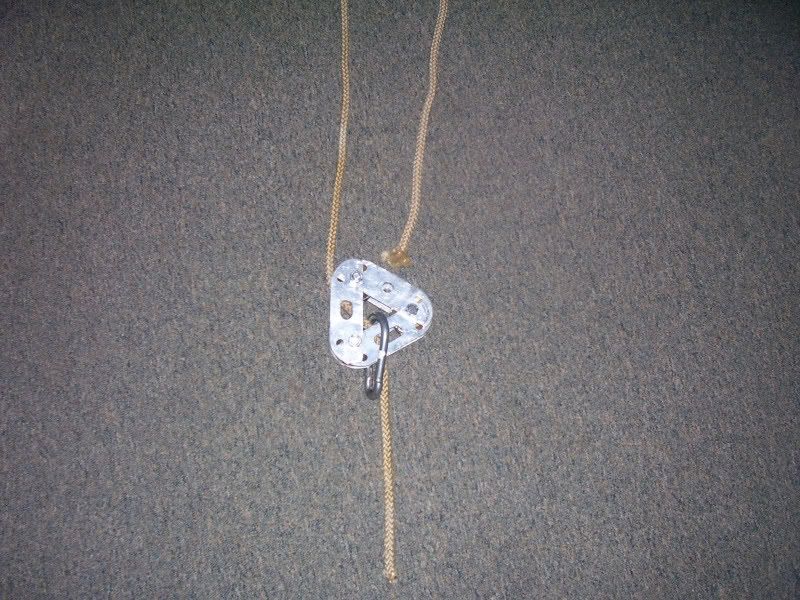You a witty dude! You gonna let me check out your next try- I am always near and around?
Jeff

Jeff


You a witty dude! You gonna let me check out your next try- I am always near and around?
Jeff
I suspect that an hourglass designed capstan will be the only way to get the unit to track true in both directions.
Think of it like a turtle shell backpack with a gearbox inside allowing you 4 choices of engagement means to operate...
I'd predict you'll eventually have to abandon the backpack concept unless the working assembly could alternately be pulled around front for inspection. Those ratcheting wrenches could have footstraps hung from them.











I thought you may like my friction ascender idea. Here is a picture of my working model. It has a freewheeling pulley sheave at each apex and works as trolley block, or ascender and descender, the carabiner hooks into the harness and binds on the sheave when weighted.

seems like you could descend if you ran the tail line through a geared pinch roller (sort of like the old style clothes wringer), which would pull tension when ascending and feed slack when cranked in reverse.
Ideally, you would use the capstan itself as a friction controller. You would just need tie-offs (wrapping posts) at the critical places and in specific configurations .It would be a nice attribute to be able to stop and descend at will.
jomoco
Ideally, you would use the capstan itself as a friction controller. You would just need tie-offs (wrapping posts) at the critical places and in specific configurations .
Seriously, the way you've described this ascent device, I'm thinking you could change over to descent as easily as unwrapping a wrap and hand-belaying. If the capstsan is picking up 90% or better of the friction, control the tail by hand and just know where your soft lock and hard lock is for stopping and work positioning.
Having the backpack, and the capstan out of sight complicates this a bit, but it still remains possible.
Keep feeding us, Jomoco.